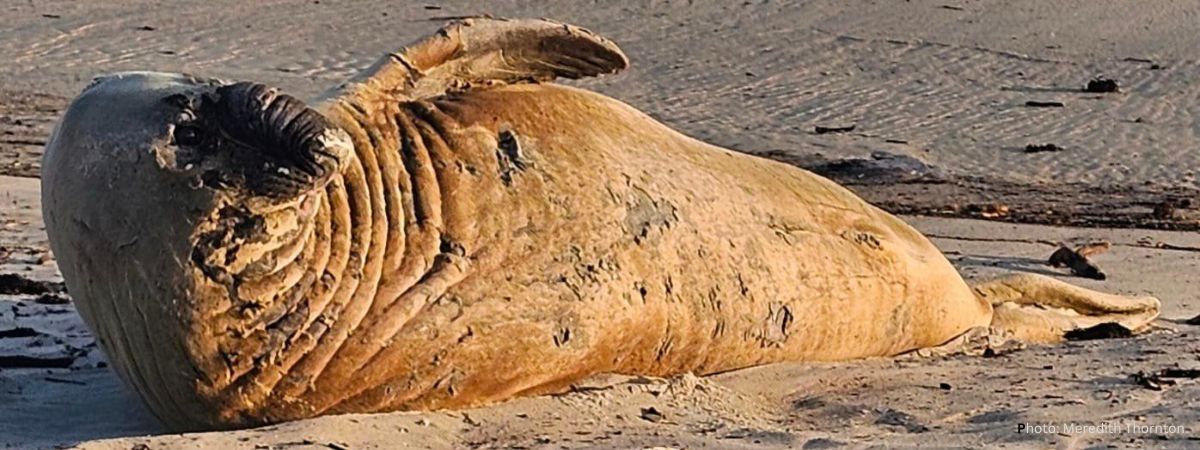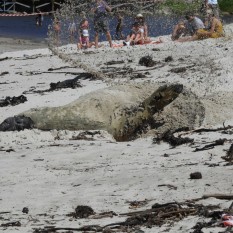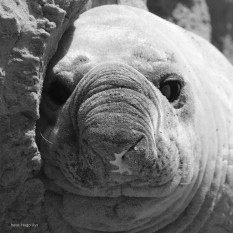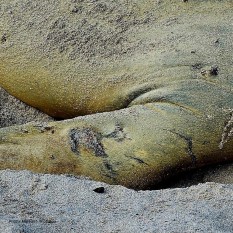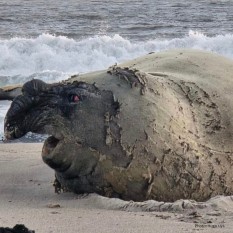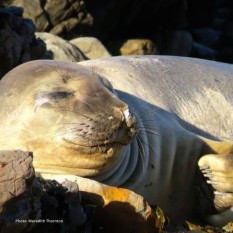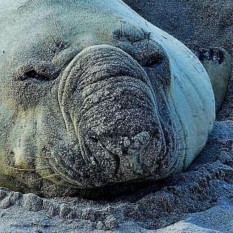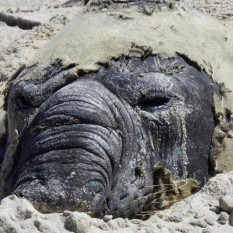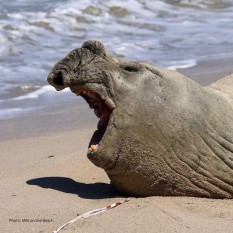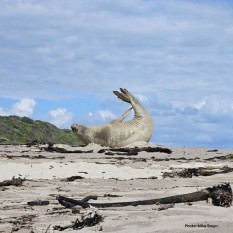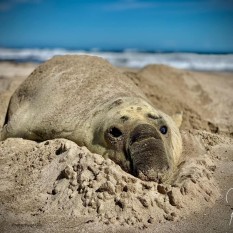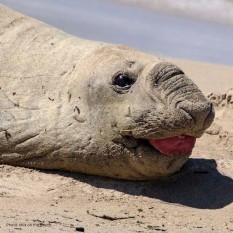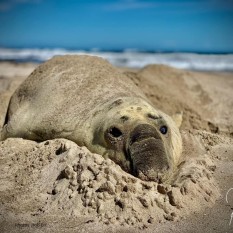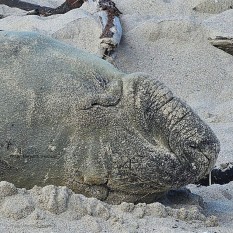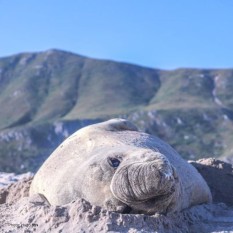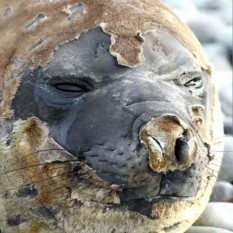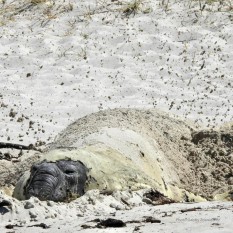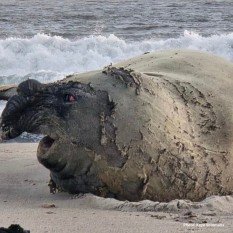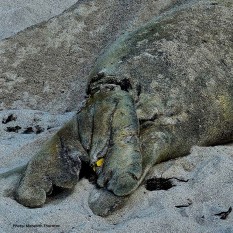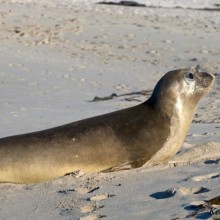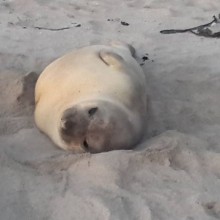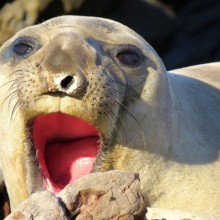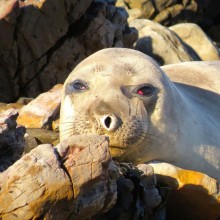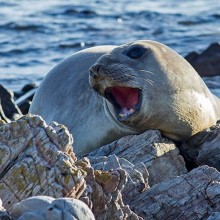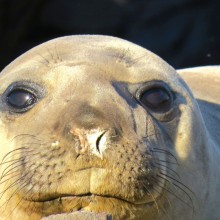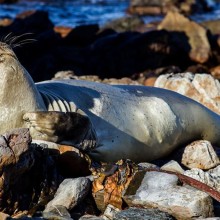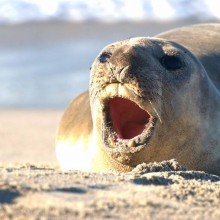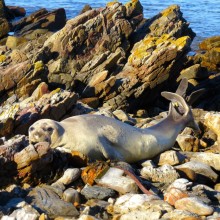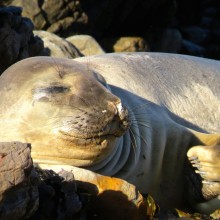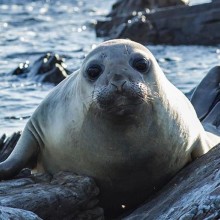Buffel Comes Home to Moult
A WARM WELCOME TO BUFFEL
We have a celebrity visiting Onrus Beach! Buffel is a southern elephant seal and is no stranger to South African shores. He has previously been seen at Duiker Island, Cape Point, and Fish Hoek Beach, where he has hauled out to undergo his annual moult.
Time will only tell if we are fortunate enough to have him stay for an extended period, or if he decides to move elsewhere. In the meantime let's please keep our distance and ensure that he is undisturbed and left in peace. Please respect the barrier, do not chase him back into the sea or pour water on him. He is 100% able to take care of himself.

We can recognize Buffel by the scar above his left eye (he seems to be blind in that eye) and the yellow tag on his hind flipper - 1657

BUFFEL: THEN -2015
Do you know that exactly 9 years ago our beloved Buffel was visiting Onrus Beach? That was the last time that he was seen here, so it's really exciting that he has returned
We know it was him because he was tagged with a uniquely numbered yellow plastic tag on his hind flippers, which is still in place. Interestingly, he had been tagged just 3 months previously at Buffelsbaai in the SANParks - Table Mountain National Park, and was estimated to be aged at 2+ years, so that makes him ~12 years old now.
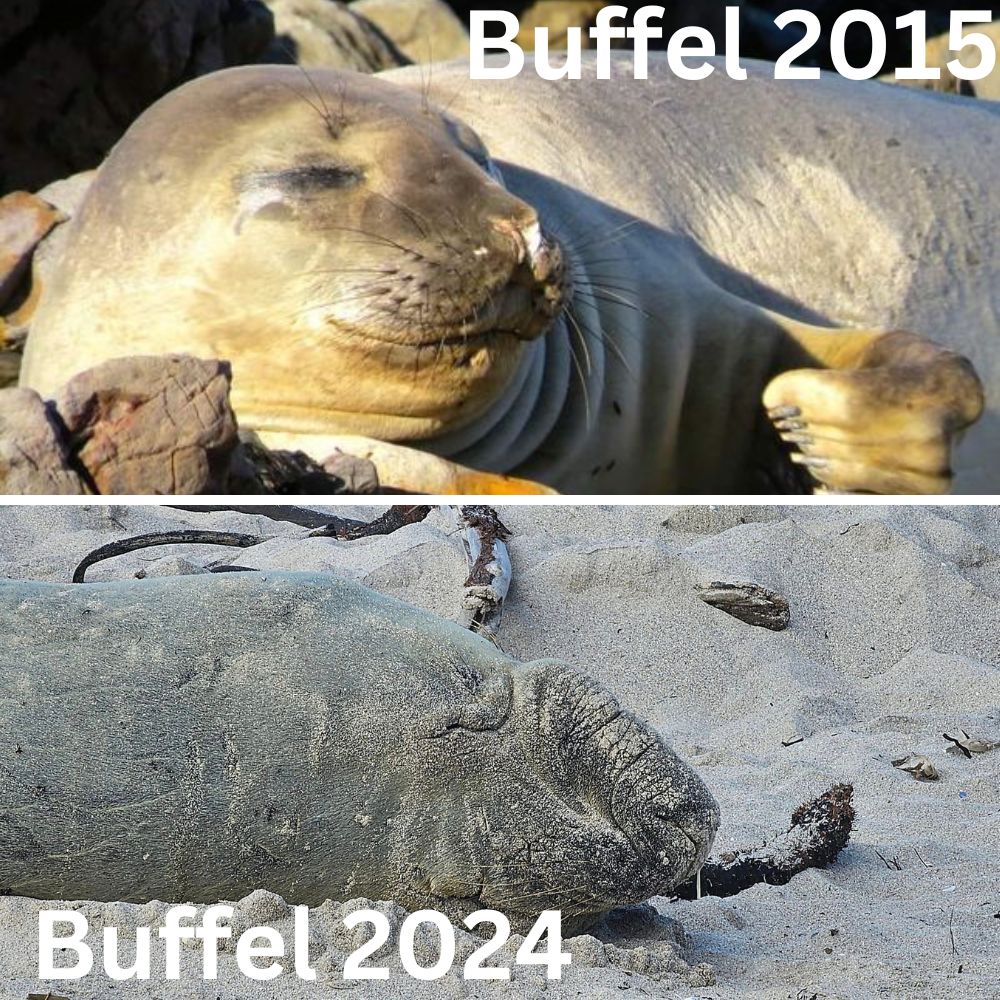
He has certainly matured since then - have a look at the photos to see the differences. Most noticeable is the development of his proboscis (large inflatable nose) and the many scars obtained as a result of fighting with other elephant seals, or perhaps even Cape fur seals.
SELSO, the elephant seal who clocked up 8,000km in six months
We picked up a fascinating story of another elephant seal named, Selso - ( Southern Elephant Seal Southbroom ) who came ashore at Southbroom on the KwaZulu-Natal coast in the middle of 2014.
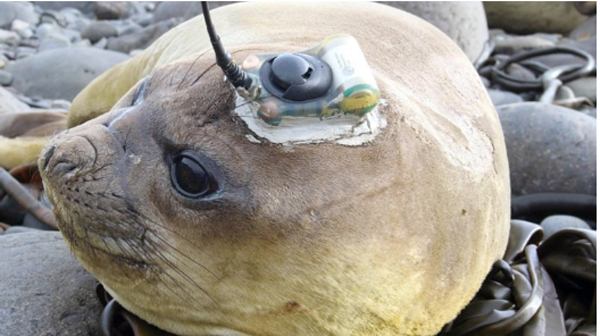
“Hi All. Let me introduce Selso, a rather special elephant seal who came ashore this is far from the normal range of southern elephant seals, which is the Southern Ocean. At only 73 kg in weight, he was close to death from starvation when he was rescued by Colette Bodenstaff and others from Seaworld in Durban. He was looked after at Seaworld over the next six months, more than doubling his weight during that time. Then in early January this year, after reaching 180 kg he was released. But before his release he was fitted with a satellite tag. This would allow us to follow his behaviour over the next year. Importantly, it would allow us to see whether rehabilitated elephant seals survive after release and therefore whether this is a worthwhile exercise. So, Selso embarked on the cruise liner, the MSC Sinfonia in January.
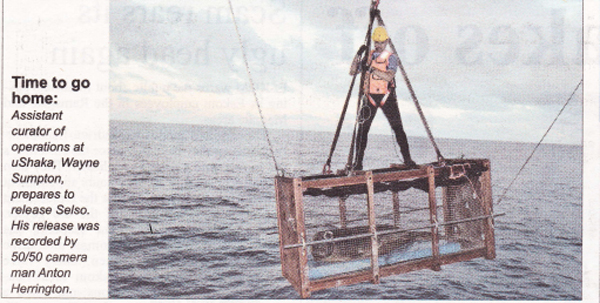
After the ship reached Port Elizabeth a few days later he was released over the edge of the continental shelf. The next 10 months saw Selso share his story with us, via satellite. And a remarkable story it was. He first swam south, eventually reaching the waters surrounding Antarctica some 4,000 km away. He did not spend long in the pack-ice before heading north again. At the end of June, he arrived at Marion Island where he hauled out on a rocky beach. During this time researchers photographed him and managed to see that, although he was a little bit on the thin side, he was apparently healthy. But he was not one to lie around. After a mere two days he was swimming again, heading north once more. Reaching South African waters once again, he decided to patrol the edge of the continental shelf. Maybe he had found a feeding ground. But would he come ashore?
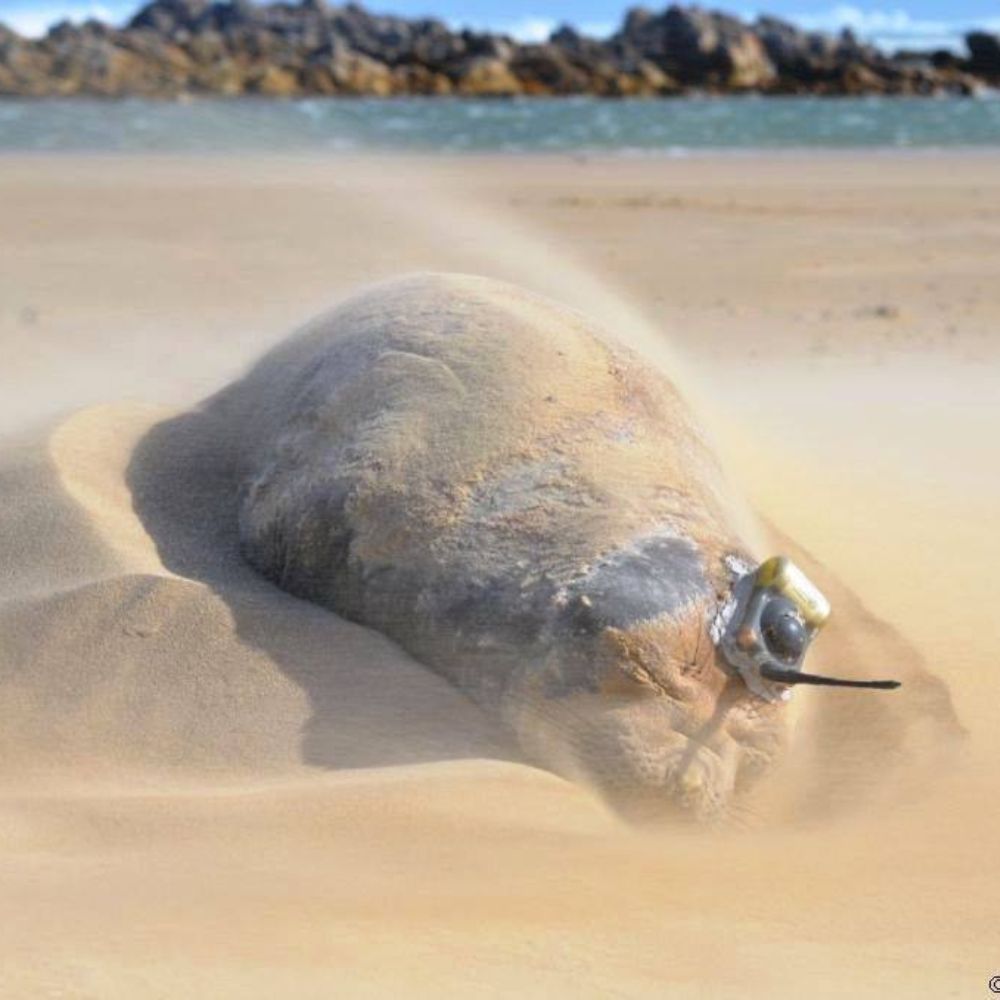
On Saturday afternoon, Bayworld Museum Marine Mammals in Port Elizabeth received a call to say there was a seal on the beach at Cape Recife. A birder watcher, braving the howling gale and flying sand, had seen a seal on the beach. Going out to investigate, little did I expect to find the seal who was awaiting me. But there on the beach, 10 months after I had last seen him, was Selso the elephant seal. And the satellite tag was still attached to him. He had carried it safely all this time. He had, however, begun his annual moult. Since the tag was glued to his coat, he would soon lose it. In fact, if he had come ashore a few days later it may well have fallen off and this expensive instrument would have drifted to the bottom of the ocean. Selso had unintentionally delivered it back to our shores before this could happen. And just down the road from where I am based! He was sleeping peacefully on the beach. The satellite tag was very loose and I managed to remove it with ease and relatively little disturbance to Selso, who despite being alarmed by my activities, soon settled down to sleep the storm and his molt away again. Unfortunately for Selso, the weather improved dramatically on Monday, leading to a dramatic increase in the number of visitors to Cape Recife. It was only a matter of time before he was unintentionally disturbed, and possibly injured or chased away. So Selso was quietly captured and is currently sleeping in a safe pen at Bayworld. As soon as his moult ends, in a few weeks, he will be on his way, swimming once more through the wide open ocean.
Elephant Seals Moulting is a painful process

People are warned to stay away as elephant seals haul themselves out of the ocean and onto beaches- sometimes in very public areas- to suffer through a natural process called catastrophic molting.
It is quite an ordeal for these animals, really nasty and uncomfortable for them with cracked skin and in some cases pus. Although seals shed their fur each year, elephant seals are the only pinnipeds to shed epidural layers.

They have to do this on land where the heat speeds up the process by directing much of their blood flow away from vital organs to the surface of their skin.
While on land the elephant seal does not eat much, if at all, which adds to its already uncomfortable situation.
When molting occurs, they shed their short, dense fur along with larger patches of old skin. Molting takes 4 to 5 weeks to complete.
Source
Text & Info: Web & Meredith Thornton
Call us and schedule your listing today! Contact Us
Copyright © 2025 Hermanus Online Magazine. Web Development by Jaydee media.

